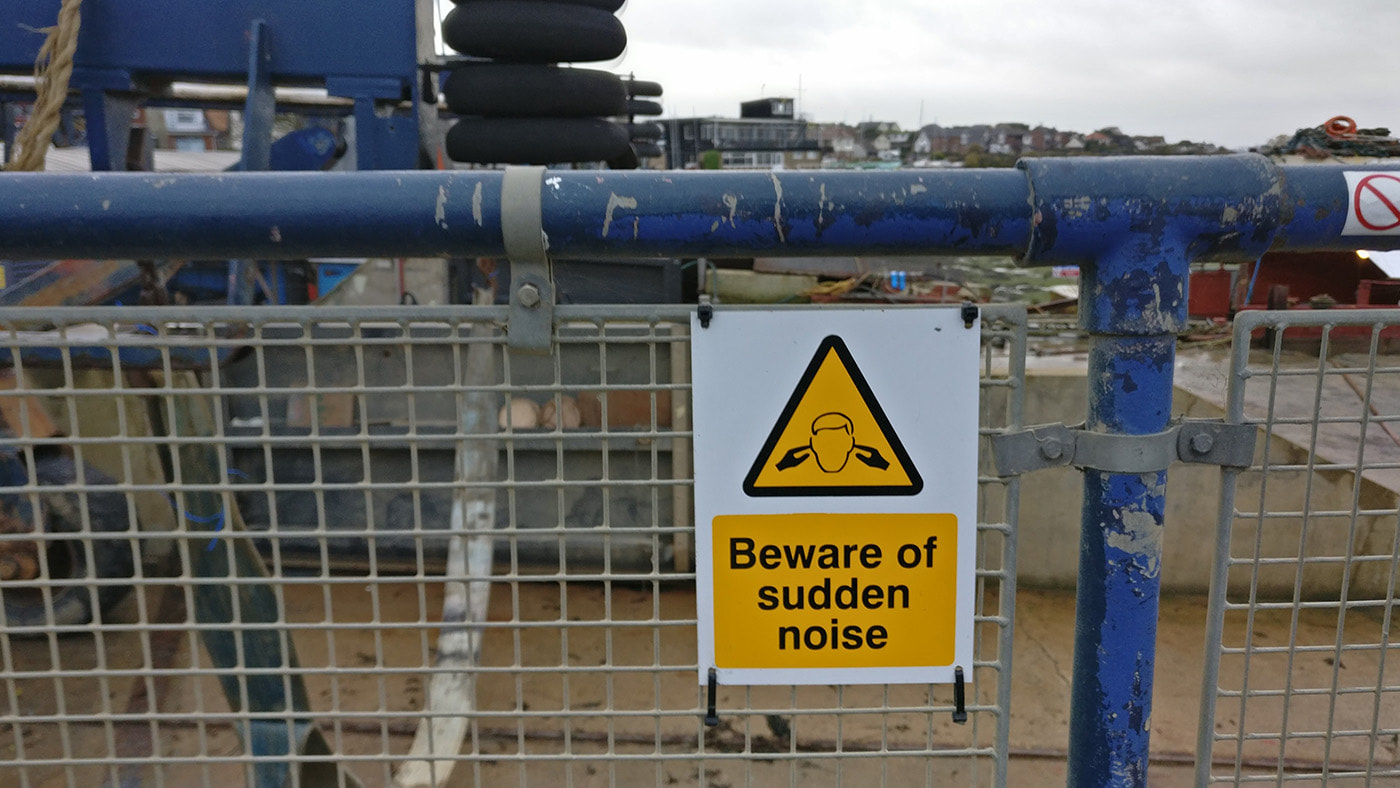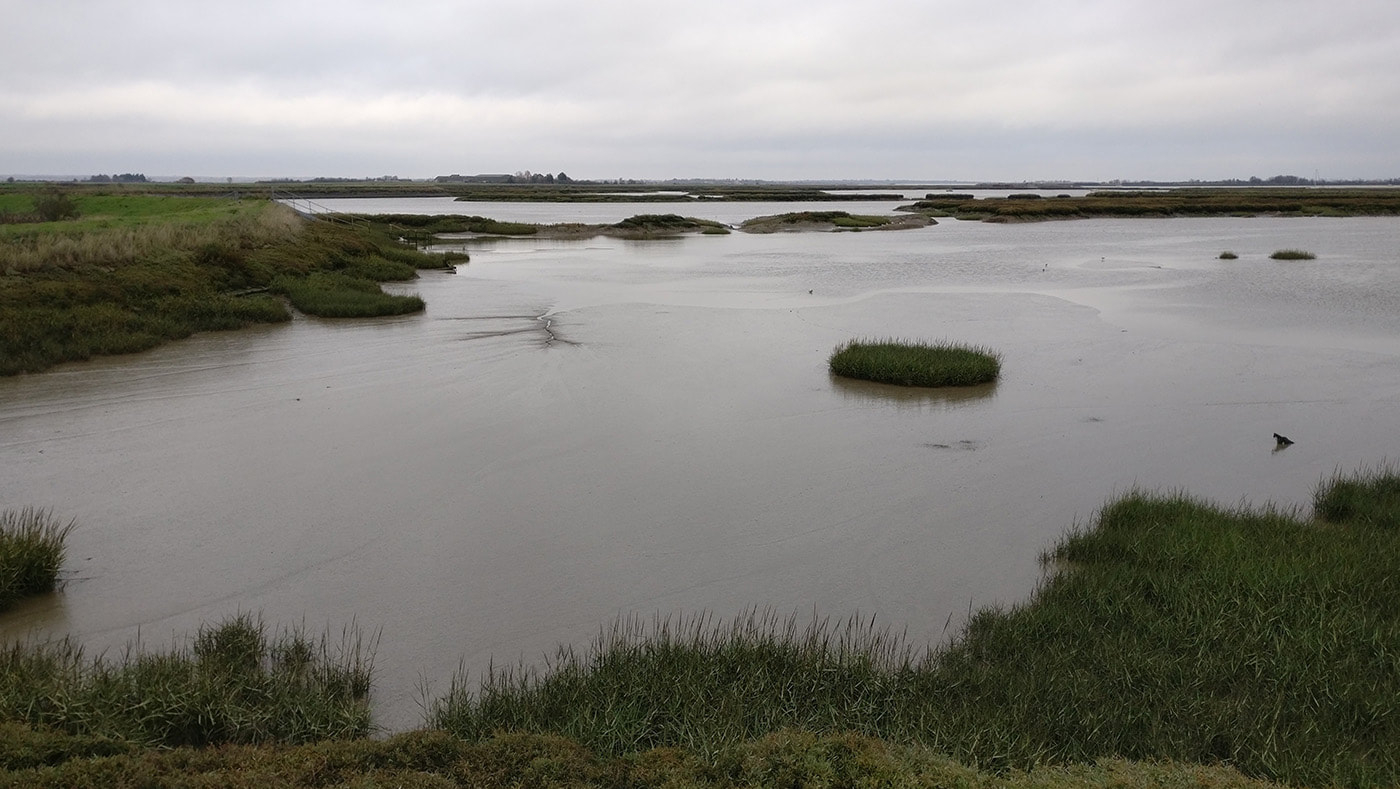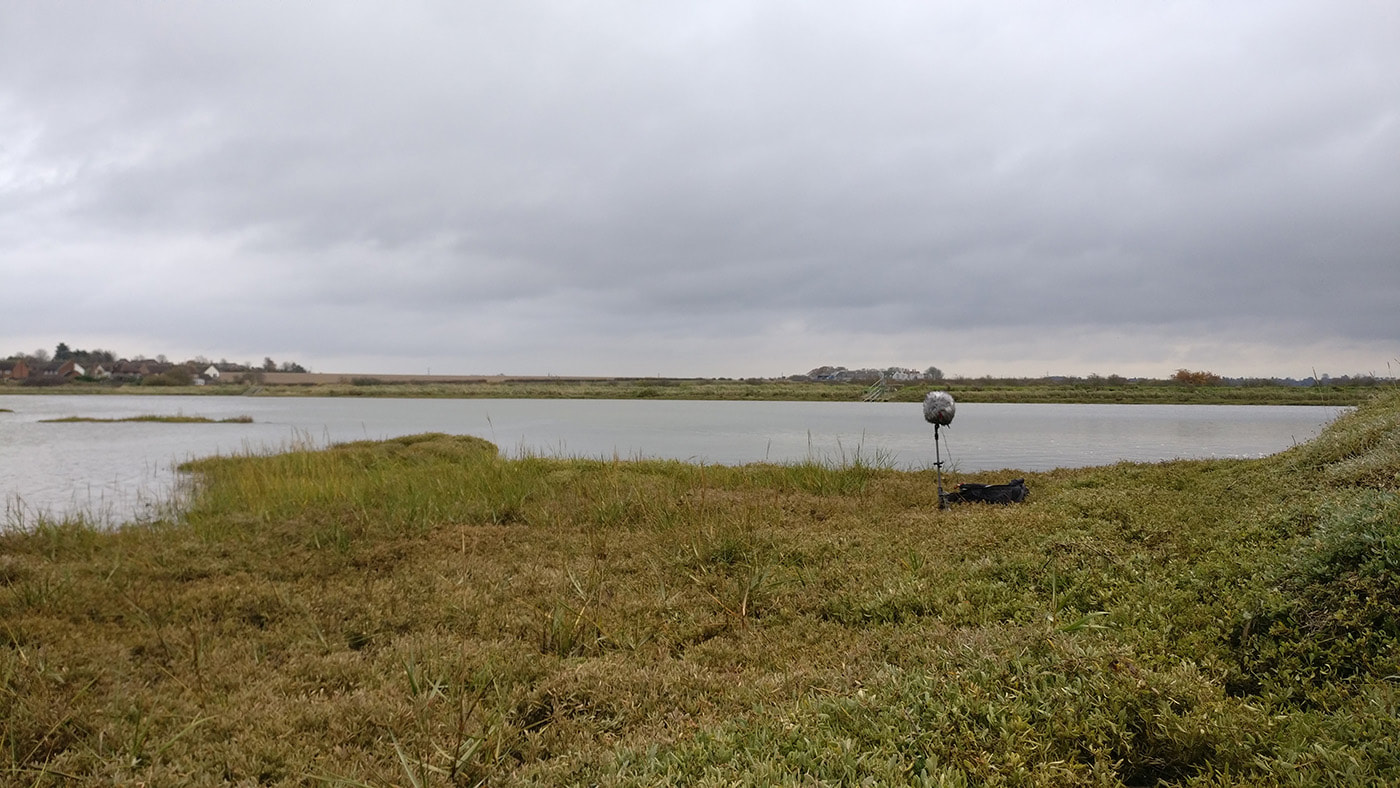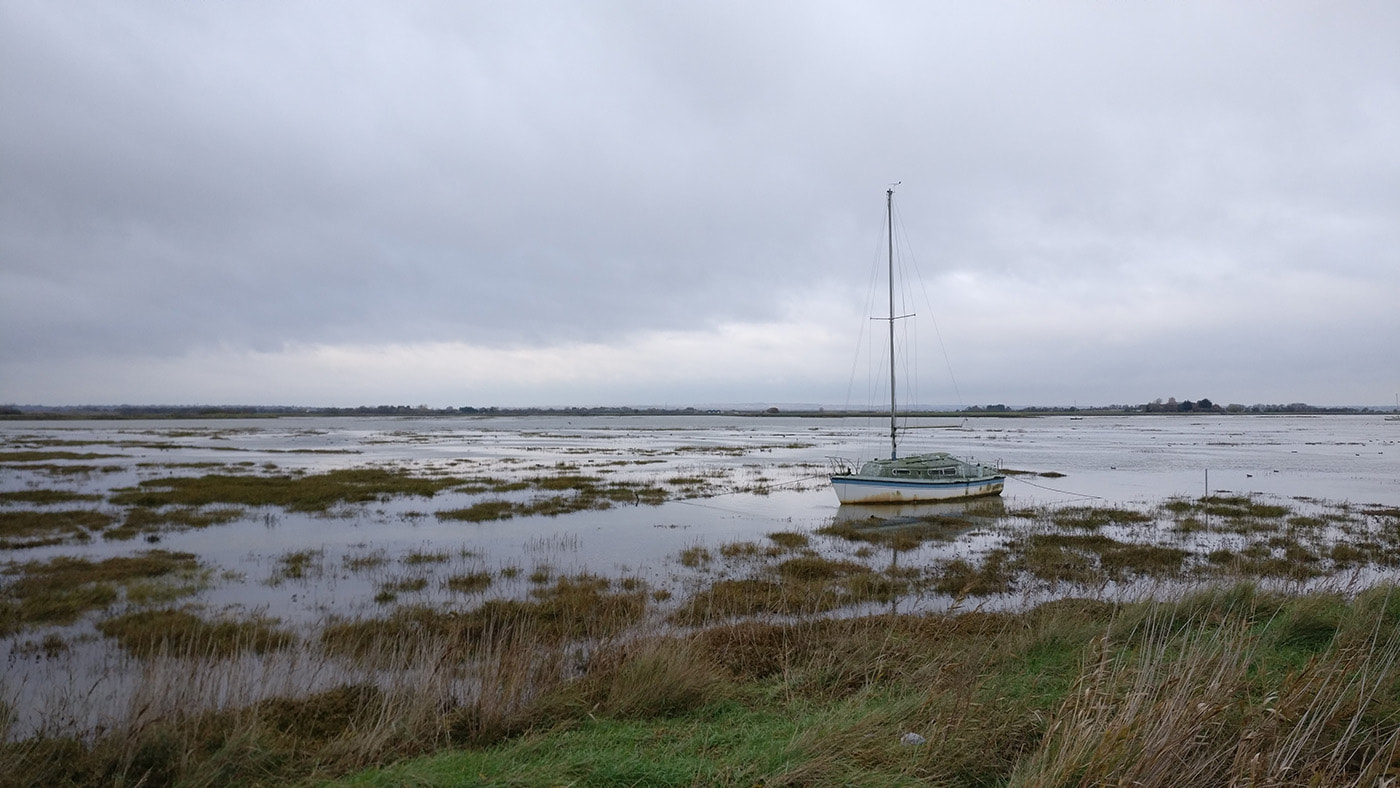|
Today’s field trip was to the river at Maylandsea to visit a couple of sites marked on Bakers map (University of Essex Archive Ref: C3). The last time that I had visited the village was in 1990 but I hadn’t explored much of the area. It stretches inland from the harbour which was a good starting point for me to walk from, being situated in the middle of several points on one of Baker’s maps. The first location was to the east and I followed the sea wall and its strange diversion through the boat yard, to see if I could get out on to the salt marsh. What was immediately clear is that where there were orchards in Baker’s day are now houses, and with houses comes people, and quite a lot of them were out, considering the grey overcast day it was. Only one person was walking without a dog, myself aside, so I felt a kind of solidarity between us for the short moment as we passed, as dog walkers must feel with other like folk. It is a small community, and dog walkers have their own very particular sub-culture within communities, so I’m curious as to what other interest bring people together in such places. Everyone knows each other and therefore, a new person doing different activities, attracts a fair bit of attention. Some people say hello. Some give a curt nod. But most talk to their dog instead of talking to the new human being, and that is fine with me if I’m recording. I just find it strange that someone would use their dog as a shield from human interaction. But then we’re all pretty strange aren’t we? I mean, I was sitting on a bench watching birds and recording the salt marsh in Maylandsea. I did however have a lovely chat with a local chap walking his two collie dogs, one of whom licked my face by way of an introduction. He extolled to me the virtues of kayaking and snorkeling in the Blackwater and the inquisitiveness of the local seals. But not on a day in November, obviously. The man also advised me on some of the footpaths around the area, which will be handy information in the coming months.
I saw a lot more birds today including Brent Geese, a flock of 12 or so Canadian Geese coming in to land, a little egret, plenty of shelduck and dunlin, a solitary curlew, 2 turnstones and a Common Sandpiper investigating all of the weed on the mudbanks, plenty of Common Gulls and a couple of Crows from my vantage point on the sea wall. There is a bird that I cannot so far identify and there were a couple of large flocks of them out on the mud. Hopefully someone will be able to tell me what they are at some point. (edit* my newly arrived second hand RSPB Pocket Guide to British Bird by Simon Haraap Second Edition helped me later identify them as Lapwings.)
Comparing the map Baker used in the 1950’s and 60’s to a modern day OS map it’s clear that a lot has changed in the environment, our environment. Housing developments over the last part of the 20th Century and early part of the 21st have meant that a lot of habitat has been lost and liminal space on the margins has become increasingly narrow and encroached upon by man’s activities. As well as protecting the land from the sea, sea walls have also become their own habitat providing homes for plants and animals alike, plus a convenient path for us to access the coastal areas. In particularly remote areas, or places less often visited by humans, wildlife naturally does as it wants, but as soon as we appear we change things, and that was very apparent from my slipping in the mud on arrival at Mundon Creek…everything flew away. Or, at least to the other side of the lagoon. I know from having spent a lot of time kayaking along the River Stour on the project The River Runs Through Us that the perspective of the land from the water is very different, and in very flat and open coastal areas such as this makes anyone walking on the sea wall very visible against the sky. My original intention for today was to visit Mundon, and approach this area by foot (along the well established St.Peter’s Way), which would have meant that my arrival in the area could have been a lot less intrusive, but the road was closed, so I decided to park in the village of Maylandsea and approach from that direction. Even though I am reasonably mindful of my affect on the natural environment (yes, I know I’m travelling by car!) a lot needs to be done on reducing my impact on any given location.
The lagoon itself was at a reasonably low tide which revealed a lot of small ‘islands’ of mud, plus larger pieces of ‘land’ with vegetation on top. But the tide was coming in, almost imperceptibly, but most definitely. I took a position below the sea wall but on a shelf of salt marsh about 5 feet below that was almost entirely carpeted with Sea Purslane, which afforded some shade from the reasonably insistent westernly wind. After settling in, I slowly started to tune in to the self, the world, detecting an openness, a stillness. The inner and outer connecting to each other, one helping to understand the other. I could feel it coming, gently but irrepressibly. The tide. External forces controlling, the land resisting but ultimately futile. I suddenly realised that my choice of position was made with this in mind, it must, in real life. As soon as I had stepped outside of ‘civilisation’, even though I could still see it, hear it, over there, I immediately felt more relaxed, more comfortable, more ‘at home’. A couple of flocks of birds circled near this end of the lagoon but flew away again. Two very impressive Mute Swans flew past, panning left to right, the sound of their wings and rhythmical vocal sounds. A kestrel hunting above the sea wall, nearer the village, hovering, eyeing up its prey and eventually stooping to catch it, although I didn’t see it fly away so it must have flown out low and below my view in the binoculars. I did however see more Shelduck, what may have been a Goldeneye but I can’t be sure, a Heron and flocks of Sandpipers and Dunlin. These flocks had retreated to one of the pieces of land in the lagoon, but their refuge was slowly becoming submerged with the inhabitants being pushed towards the top. An ever shrinking amount of space for everyone, but of course, they’ll be able to fly to somewhere else. We will not. Soon I’ll have to retreat myself, to the sea wall, to civilisation, and then home. Hello, the dog walkers say, marking my passage from one place to the next.
0 Comments
Leave a Reply. |
Details
AuthorInspired by J A Baker's The Peregrine, recording the sonic landscape around the River Blackwater, Essex. Funded by Arts Council England's Develop Your Creative Practice grant 2019 - 2020. Archives
December 2023
Categories |






 RSS Feed
RSS Feed
